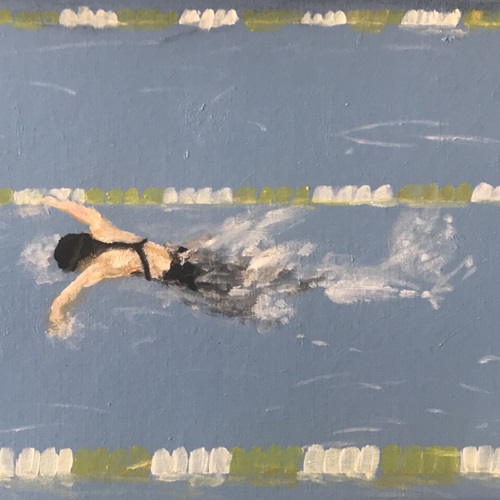The aquatic hospitalist
As with swimming, the trick of being a hospitalist is learning not to drown.
You're about to dive into the deep end of the hospital. Here's some advice from a seasoned hospitalist and a former Division 1 swimmer on how to stay afloat.

Always warm up before the events of the day begin. You can limber up your brain with games like Wordle and Connections, and don't forget to stretch your body, too. Make that morning handoff a little more literal with a lap around the ward!
When you first began to swim, you were belly flopping and doing the doggy paddle. When you were a med student, you were hoping to hear a murmur or know all of a patient's medications. Eventually, from doing the butterfly to rounding efficiently, you'll have mastered the skills. You need a variety of strategies to manage your pool of patients. Sometimes it's a sprint, and other times the race is a long-distance haul.
The first stroke you learn is freestyle. It seems relatively basic, like learning to take a patient's history, but you can always improve. For example, sitting by the bedside and using active listening techniques without encouraging collection of tangential information or giving the appearance of being rushed is Olympic-level history taking. If you have a 12-hour shift, you're going to be relying on your ability to do this stroke.
Next is breaststroke. Though it might seem simple, it has to be done just right, or you might hurt yourself or your patients, like doing a procedure but not learning the proper technique. The old philosophy of “see one, do one, teach one” is outmoded in the era of simulation and patient safety.
Butterfly comes next. It may feel like the most painful stroke, like being on a busy night shift, but sometimes you must power through. Doing the butterfly and discovering you have six pending admissions are similar in that the most important step is remembering to breathe.
Finally, you have to learn backstroke. Like the first day on a comanagement service, you may not know where you're going or if you're on target, and sometimes you only know it's done when you hit your head, but if you keep a close eye on your surroundings (especially those patients!), you'll pull through.
Swimming and hospitalist practice may seem like solo sports, but the truth is you're part of a squad, whether it's a relay or a multidisciplinary team. While someone excels in butterfly, you might be an expert backstroker. And even if freestyle, or patient care, is your favorite stroke, sometimes you have to do breaststroke, or go to a meeting, for the team.
An important part of being a well-rounded competitor is teaching the next generation to succeed. You can do this by demonstrating your technique, sharing what you know, and demonstrating how to be a good team member.
The buzzer has sounded (i.e., your pager just went off with your first admission of the day). You've trained for years, mentally and physically prepared this morning, and now you're ready to dive in.
Like competitive swimming, a day as a hospitalist can be physically and emotionally draining; you have to have proper technique, perseverance, and practice; and you wear a funny suit!
In either case, the secret is to make sure you stay buoyant.



